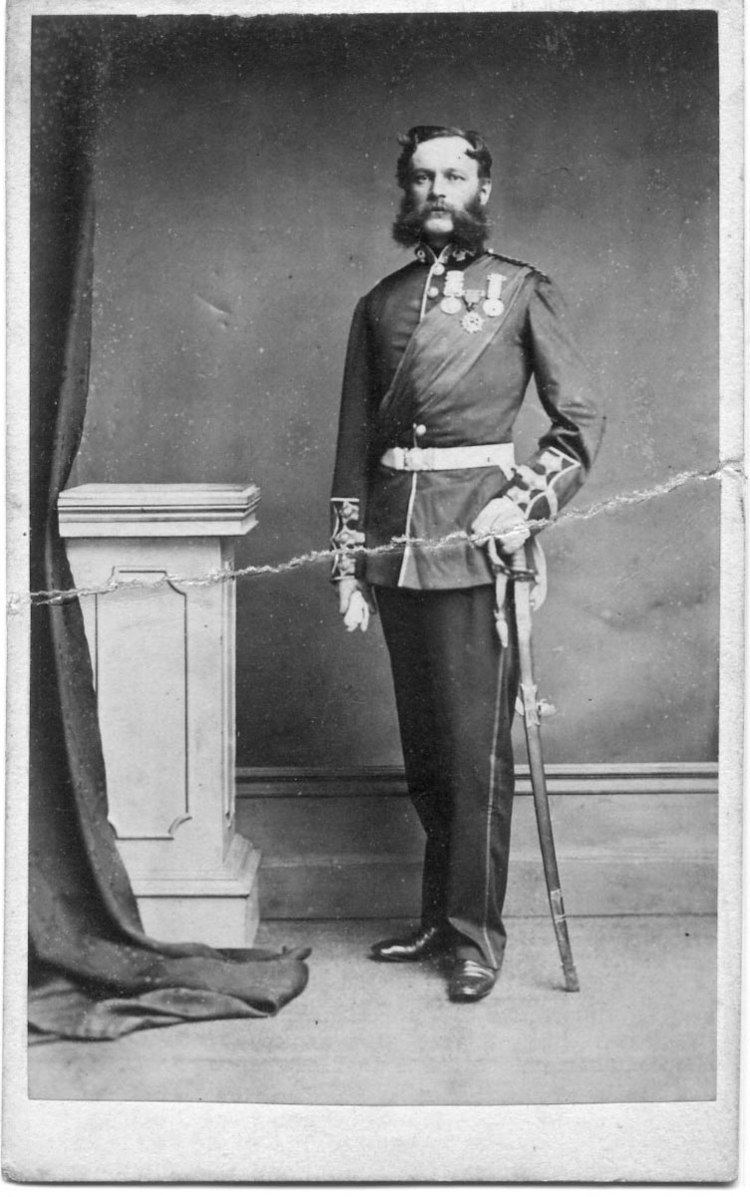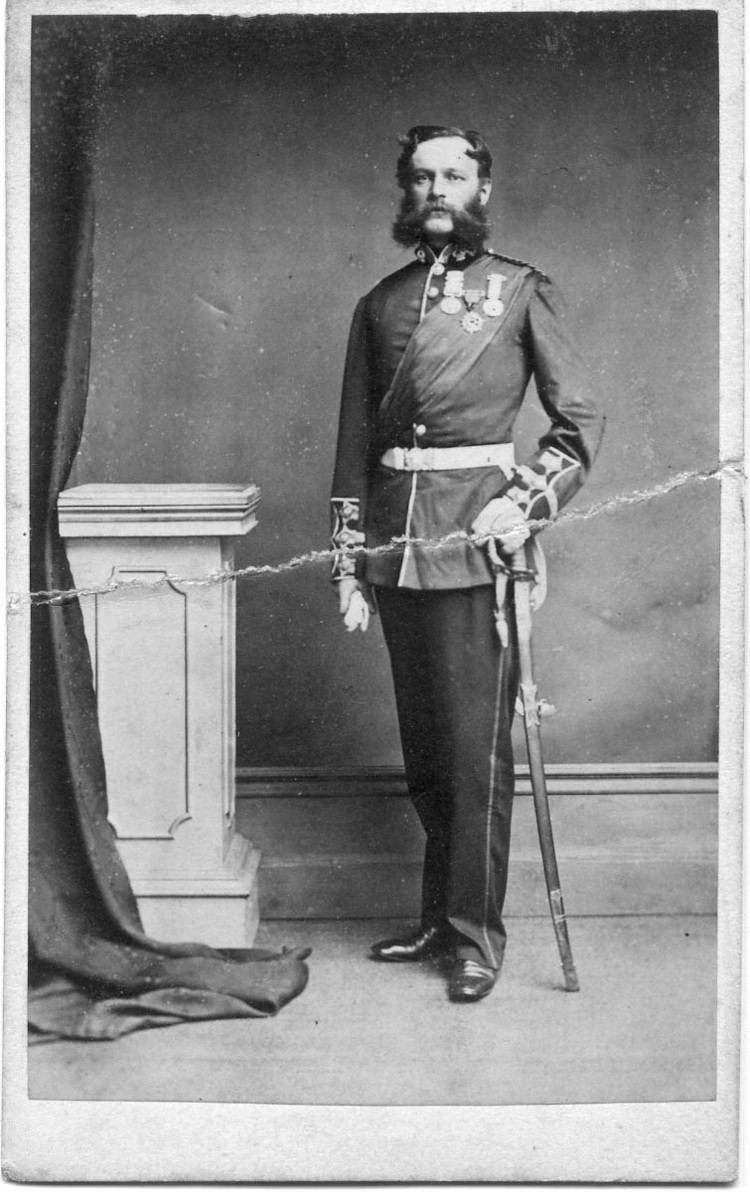Years of service 1853-1886 | Rank Major-General Name John Harkness | |
 | ||
Born 29 January 1831Limehouse, London ( 1831-01-29 ) Battles/wars 1853: Crimean War1854: Battle of Alma1854: Battle of Inkerman1855: Assault on the Quarries1855: Siege of Sevastopol1855: Battle of the Great Redan1878-80: Second Anglo-Afghan War Spouse(s) Annabella Harriette James (m. 1864–1900) Battles and wars Battle of Alma, Battle of Inkerman, Siege of Sevastopol, Battle of the Great Redan, Second Anglo-Afghan War Service/branch 55th (Westmorland) Regiment of Foot, Royal Northumberland Fusiliers | ||
John Granville Harkness, J.P. (29 January 1831 – 22 June 1900) was a major-general in the British Army during the Victorian era.
Contents

Early life
He was born 29 January 1831 at Limehouse, London, to John Samuel Harkness, MD (1797–1842) and his wife Anne Harriette, née Eliot (1807–1884). As such, he descended from Northern Irish doctors on his paternal side and from a significant British military family on his maternal side. This side included his grandfather, Lieutenant-Colonel William Granville Eliot RHA, his great-grandfather Colonel Francis Perceval Eliot, his gg-grandfather, General Granville Elliott and his ggg-grandfather Major-General Roger Elliott. He was also a great-nephew of Edward John Eliot.
During the 1830s, his family moved to Ivy Lodge, London Road, Ore, Hastings, Sussex, where he attended the Misses Borrow's Preparatory School, Hastings, and later Temple School, Brighton.
Military career
He entered the army on 13 May 1853 as Ensign in the 55th Regiment, without purchase - on the recommendation of the Duke of Wellington for his grandfather's service. In 1854, he was promoted to lieutenant and served throughout the Crimean Campaign 1854–55. He carried the Queen's colour at the Alma. For heroic conduct, both he and his friend, William Hamilton Richards, were nominated for the Victoria Cross by Major-General Sir Charles Warren. He fought at Inkerman, the assault on the Quarries, the sortie of 26 October 1854, the siege and the fall of Sevastopol and the Battle of the Great Redan. Two pencil drawings of the Crimea War by Harkness survive at the National Army Museum
In 1862, he was appointed to the 5th Fusiliers and ADC to Sir William Stevenson, the Governor of British Mauritius. He served in South Africa 1864–67. He was promoted brevet major in March 1872, and major in October 1877, before taking part in the Second Anglo-Afghan War 1878–1880. He commanded the column that cleared the entrance to the Khaibar or Khyber Pass. Having returned to Berwick, he was promoted to lieutenant-colonel in 1881 and colonel in July 1882.
During the disturbances in Ireland in 1882, he was appointed JP for the city and county of Dublin. He retired as a major-general in January 1886, and settled back at his childhood family house - Ivy House, Ore.
He held the Crimean medal with three clasps, fifth class of the Medjidie, and the Turkish and Afghan medals. He was mentioned in dispatches, twice wounded and in receipt of the reward for distinguished service pension.
Family
On 2 June 1864 at St Helen's Church, Ore, Hastings, Sussex, he married his first cousin Annabella Harriette James (1839 – 1928), with two daughters, both born in South Africa:
He died on Friday 22 June 1900 at his home at Ivy House, Ore, and was buried on Tuesday 26 June 1900 at Hastings Cemetery
